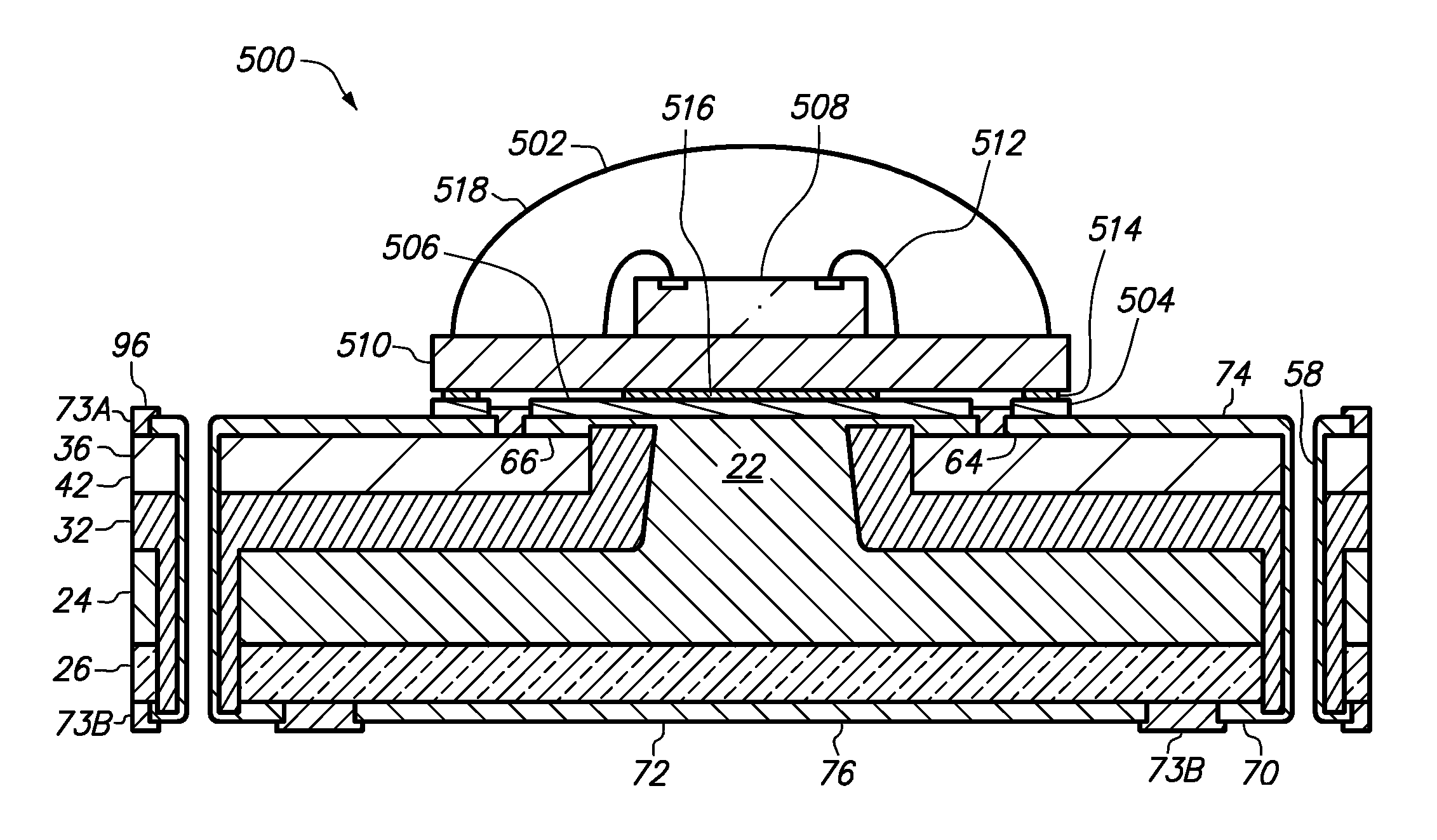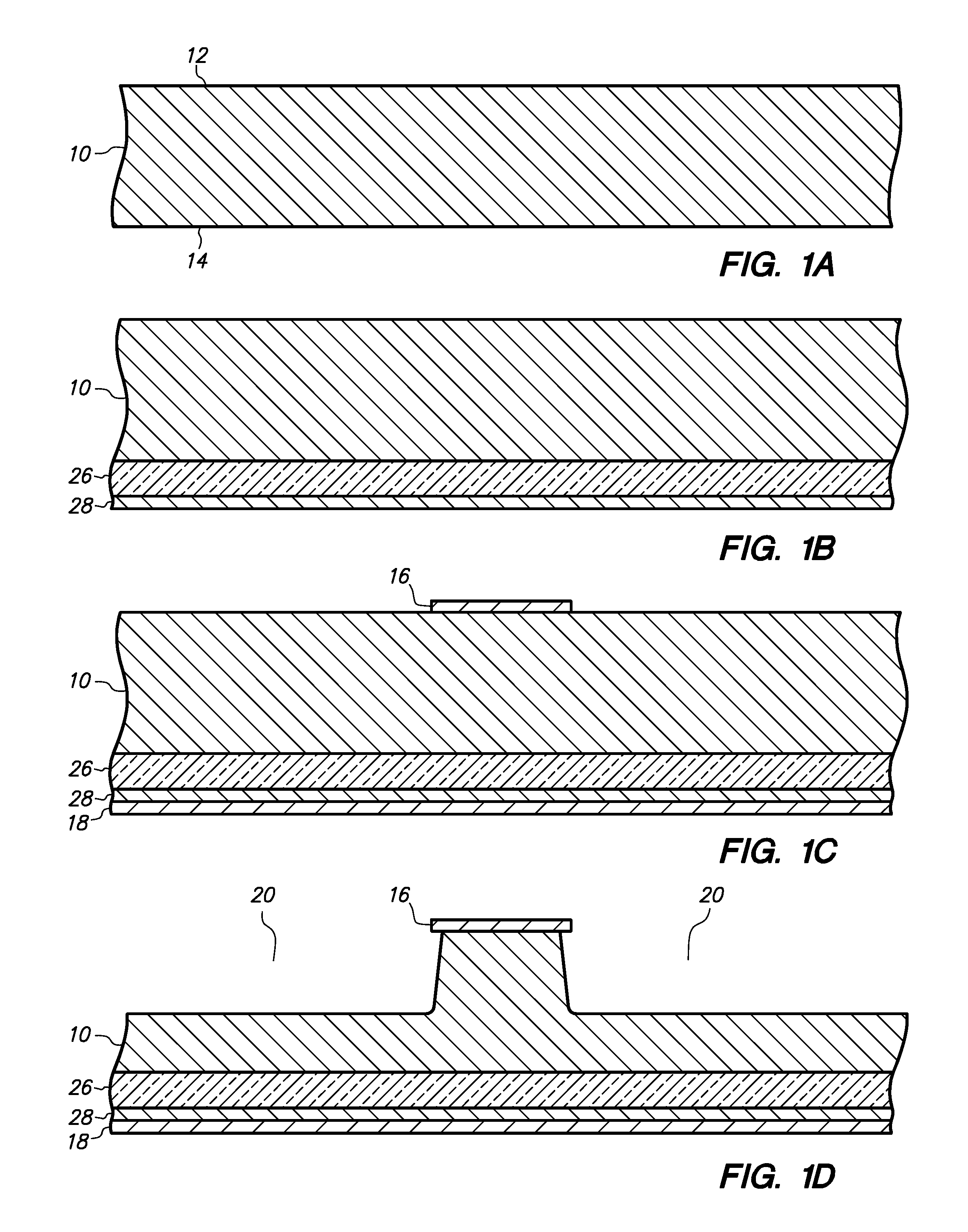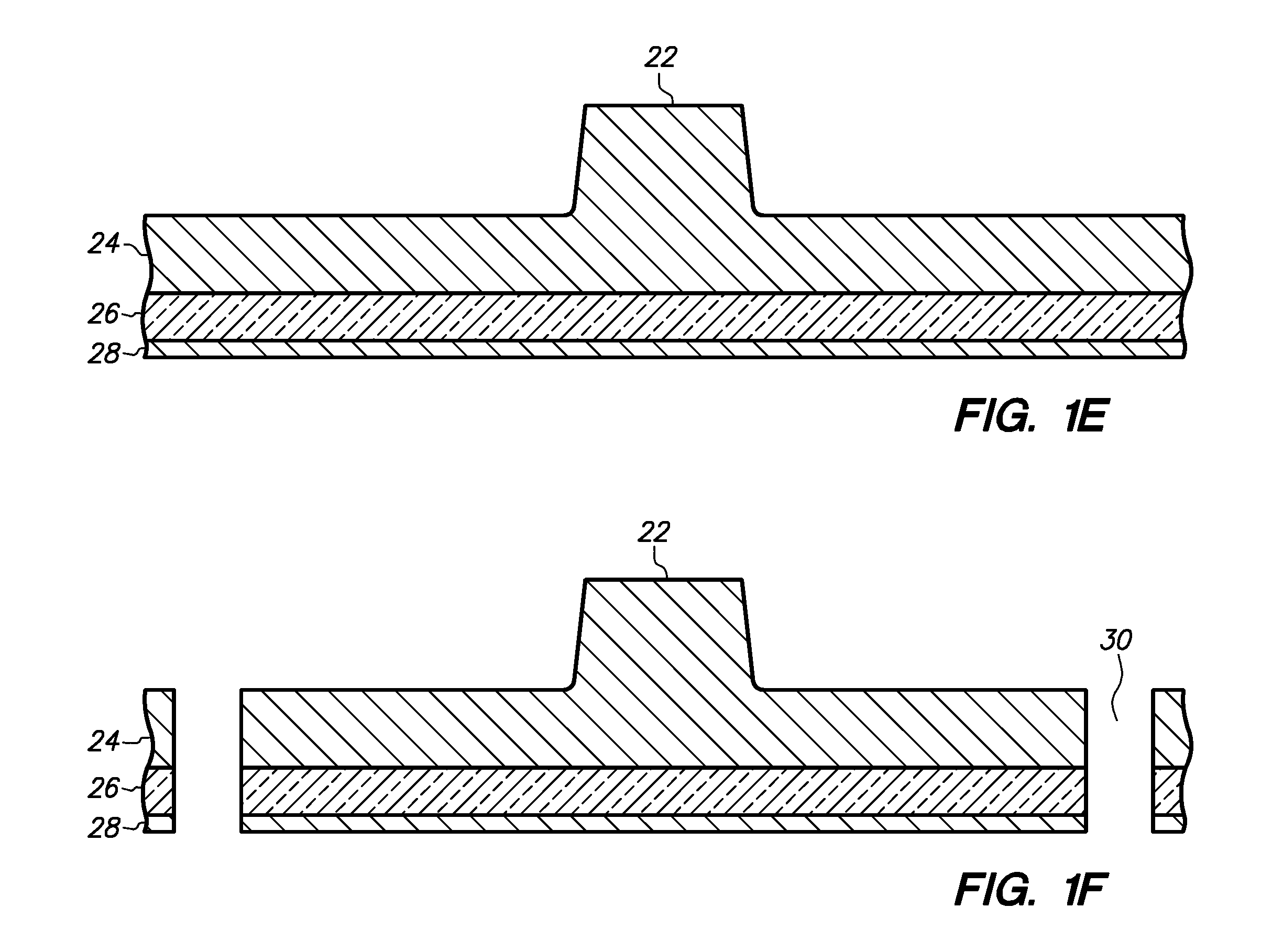Semiconductor chip assembly with post/base heat spreader with ESD protection layer
a technology of esd protection layer and semiconductor chip, which is applied in the manufacture of printed circuits, printed circuit aspects, basic electric elements, etc., can solve the problems of short life span, immediate failure of the semiconductor chip, and heat not only degrading the semiconductor chip, so as to achieve excellent heat spreading and heat dissipation, low cost, and low thermal conductivity.
- Summary
- Abstract
- Description
- Claims
- Application Information
AI Technical Summary
Benefits of technology
Problems solved by technology
Method used
Image
Examples
Embodiment Construction
[0114]FIGS. 1A-1F are cross-sectional views showing a method of making a post, a base, an ESD protection layer and a metal layer in accordance with an embodiment of the present invention, and FIGS. 1G and 1H are top and bottom views, respectively, corresponding to FIG. 1F.
[0115]FIG. 1A. is a cross-sectional view of metal plate 10 which includes opposing major surfaces 12 and 14. Metal plate 10 is illustrated as a copper plate with a thickness of 400 microns. Copper has high thermal conductivity, good bondability and low cost. Metal plate 10 can be various metals such as copper, aluminum, alloy 42, iron, nickel, silver, gold, combinations thereof, and alloys thereof.
[0116]Metal plate 10 provides the foundation for a unified structure that includes post 22, base 24, ESD protection layer 26 and metal layer 28 as described below.
[0117]FIG. 1B. is a cross-sectional view of ESD protection layer 26 and metal layer 28 attached to metal plate 10.
[0118]ESD (electrostatic discharge) protection...
PUM
 Login to View More
Login to View More Abstract
Description
Claims
Application Information
 Login to View More
Login to View More - R&D
- Intellectual Property
- Life Sciences
- Materials
- Tech Scout
- Unparalleled Data Quality
- Higher Quality Content
- 60% Fewer Hallucinations
Browse by: Latest US Patents, China's latest patents, Technical Efficacy Thesaurus, Application Domain, Technology Topic, Popular Technical Reports.
© 2025 PatSnap. All rights reserved.Legal|Privacy policy|Modern Slavery Act Transparency Statement|Sitemap|About US| Contact US: help@patsnap.com



